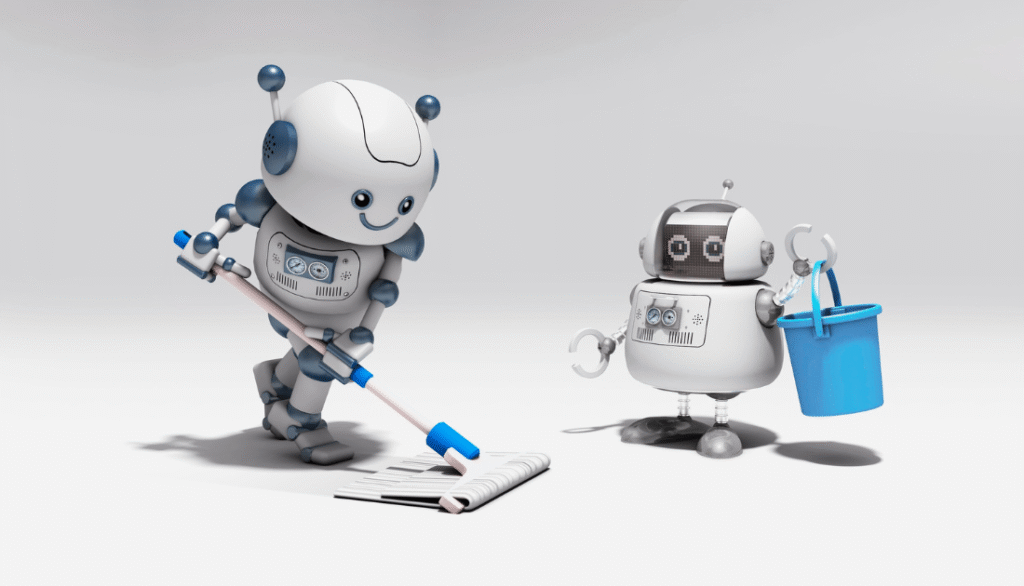Hugging Face, widely known for its contributions to the open-source AI community, has announced its expansion into hardware with the debut of two new humanoid robots.
Highlights
- Hugging Face unveils two open-source humanoid robots: HopeJR (a full-size robot with 66 degrees of freedom) and Reachy Mini (a desktop model for prototyping and AI testing).
- Pricing is designed for accessibility: HopeJR aims to launch for under $3,000, while Reachy Mini is expected to cost around $250–$300.
- Developed in collaboration with Pollen Robotics and The Robot Studio, these robots emphasize openness and transparency in design and functionality.
- Part of the LeRobot platform: an open-source robotics stack that includes AI models, training datasets, and simulation tools for virtual testing and development.
- Pi0 is a standout feature, translating natural language into robotic actions, allowing users to issue commands like “fold this shirt” in plain speech.
- Moss v1 will offer an even cheaper entry point, priced at around $150, aimed at education and beginner robotics development without 3D printing requirements.
- Community-led development is central: Hugging Face is building one of the largest open robotics datasets through global collaboration and contributions.
- Extensive learning resources are included, covering the full cycle from hardware assembly to neural network training for vision-to-action robotics.
HopeJR, a full-scale robot capable of walking and object manipulation, and Reachy Mini, a compact desktop unit intended for testing and prototyping AI applications.
This development aligns with the company’s broader mission to make robotics more accessible, transparent, and affordable.
According to Hugging Face co-founder and CEO Clem Delangue, the initiative is intended to lower entry barriers in a field historically defined by expensive, closed-source systems.
Overview of the Robots
HopeJR, Hugging Face’s flagship robot, features 66 degrees of freedom, enabling it to perform a wide range of motions, including walking, gesturing, and object handling.
The estimated price is expected to be under $3,000, which is relatively affordable for a humanoid platform with such capabilities.
Meanwhile, Reachy Mini is designed with developers and researchers in mind.
Priced between $250 and $300, it offers features such as head movement, voice interaction, and audio input—ideal for testing conversational AI or conducting experiments in human-robot interaction at a smaller scale.
Although exact launch dates have not been confirmed, Hugging Face anticipates shipping early units before the end of 2025. A waitlist is already open, attracting attention from educators, independent developers, and hobbyists.
Strategic Acquisitions and Collaborations
The launch follows Hugging Face’s acquisition of French robotics firm Pollen Robotics in April 2025. Pollen brought with it a deep robotics engineering background and played a key role in the development of HopeJR.
The robot was co-designed with The Robot Studio, further emphasizing the collaborative and open-source ethos behind the project.
LeRobot
These hardware announcements are part of Hugging Face’s broader LeRobot initiative, launched in 2024. LeRobot is a software toolkit and open repository that includes:
- AI models
- Training datasets
- Simulation tools
LeRobot is compatible with a variety of robotic systems, from basic educational bots to complex humanoids, and supports integration with physics-based simulators, allowing developers to test systems virtually before deploying them in physical robots.
Pi0
A standout feature of the LeRobot stack is Pi0, developed in collaboration with Physical Intelligence.
Pi0 is a foundational model that translates natural language instructions into physical robotic actions, enabling tasks such as folding laundry or organizing objects. This functionality allows non-expert users to control robots intuitively using plain speech.
Moss v1
To further reduce barriers to entry, Hugging Face is developing Moss v1, a highly affordable robotic kit priced around $150. Moss v1 includes two robotic arms and eliminates the need for 3D printing, making it well-suited for educational settings and first-time robotics developers.
Community-Centric Development Approach
The company has also focused on fostering a collaborative global robotics community. Through LeRobot, Hugging Face is building one of the largest open robotics datasets by crowdsourcing contributions from universities, research institutions, startups, and individual developers.
In addition to the tools, Hugging Face offers step-by-step tutorials covering the full development cycle—from sourcing hardware components to training neural networks that map camera input to robotic motor actions.
These learning resources aim to support both beginners and experienced developers.


